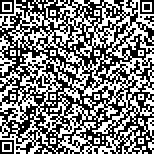|
|
| |
|
|
| 本文已被:浏览 68次 下载 0次 |

码上扫一扫! |
|
|
| 黑潮流套脱落反气旋涡对声传播的影响研究 |
|
路露1,2, 南峰2,3,4,5, 梁向前1, 于非2,3,4,5, 陈子飞2,3, 徐安琪2,3
|
|
1.山东科技大学数学学院 山东青岛 266590;2.中国科学院海洋环流与波动重点实验室 山东青岛 266071;3.中国科学院海洋大科学研究中心 山东青岛 266071;4.中国科学院大学地球科学学院 北京 100049;5.崂山实验室 山东青岛 266237
|
|
| 摘要: |
| 黑潮在冬季常以流套的方式入侵南海, 并多伴随着反气旋涡的脱落, 脱落的反气旋涡将黑潮高温、高盐水带入南海, 影响南海东北部水文要素和声速场的空间分布, 目前尚未有对黑潮流套脱落反气旋涡声学效应的研究。利用2009~2020年卫星高度计数据和再分析数据, 在南海东北部选取了6个冬季黑潮流套脱落反气旋涡, 研究了其水文和声场结构, 并应用Bellhop高斯射线模型仿真给出了其对声传播的影响。结果表明: (1) 6个黑潮脱落反气旋涡平均半径为110~135 km, 垂向深度可达1 000~1 200 m, 最大旋转速度为0.4~0.6 m/s。反气旋涡中心暖水下沉, 温度异常均为正异常, 暖核位置位于100~250 m处, 最大正异常达到2.5 °C。中心盐度异常呈现负-正-负的三核结构。反气旋涡在100~900 m深度声速为正异常, 最大正异常超过8 m/s, 出现在400 m左右。(2) 声波从涡外穿过涡旋和从涡内向外传播, 当地形不会影响声线的反转时, 会聚区的位置发生后移, 后移的距离在5~10 km; 当地形阻碍声线的反转时, 声线与地形接触的位置不同, 会聚区可能出现前移或后移, 后移最大为29 km, 前移最大可达23 km。(3) 当声源深度和接收深度都为300 m时, 涡旋引起的声传播损失相比与无涡环境下最大增加10~15 dB,同时地形与海底的反射也会使得声传播损失增大5~10 dB。本文研究结果对南海东北部深海通信、远程探测、舰艇侦察与反侦察等具有一定意义。 |
| 关键词: 南海 黑潮流套 反气旋涡 会聚区 传播损失 |
| DOI:10.11693/hyhz20230800167 |
| 分类号:P731 |
| 基金项目:国家重点研发计划项目,2022YFB3205300号;国家自然科学基金面上项目,42376010号;泰山学者工程资助,tsqn202306282号;国家自然科学基金青年项目,42306024号。 |
|
| INFLUENCE OF ANTICYCLONIC EDDY SHEDDING FROM KUROSHIO LOOP ON SOUND PROPAGATION |
|
LU Lu1,2, NAN Feng2,3,4,5, LIANG Xiang-Qian1, YU Fei2,3,4,5, CHEN Zi-Fei2,3, XU An-Qi2,3
|
|
1.School of Mathematics, Shandong University of Science and Technology, Qingdao 266590, China;2.Key Laboratory of Ocean Circulation and Wave Studies, Institute of Oceanology, Chinese Academy of Sciences, Qingdao 266071, China;3.Center for Ocean Mega-Science, Chinese Academy of Sciences, Qingdao 266071, China;4.College of Earth Science, University of Chinese Academy of Sciences, Beijing 100049, China;5.Laoshan Laboratory, Qingdao 266237, China
|
| Abstract: |
| Previous studies have shown that the Kuroshio often intrudes the South China Sea (SCS) in winter through a looping current, accompanied by shedding anticyclonic eddies. These shedding eddies bring high-temperature and high-salinity water from the Kuroshio into the SCS, affecting the spatial distribution of hydrological elements and acoustic fields. However, corresponding research about sound propagation caused by such eddies lacks. Utilizing altimeter satellite data and reanalysis data from 2009 to 2020, six anticyclonic eddies shedding from the Kuroshio were selected in the northeastern SCS during winter to study their hydrological and acoustic field structures, and to simulate their influence on sound propagation using the Bellhop Gaussian beam model. Results show that the average radius of the six shedding eddies was 110~135 km in 1 000~1 200 m depth with maximum geostrophic currents of 0.4~0.6 m/s. Warm water descends in the center of the eddy, causing positive temperature anomalies in the maximum of 2.5 °C in 100~250 m. The center of the eddy displays a three-core structure with negative-positive-negative salinity anomalies. The positive anomaly of the sound speed appears at 100~900 m in maximum of 8 m/s at 400 m depth. When sound waves go through the eddy, the position of convergence zone (CZ) would shift backward by 5~10 km, which is not affected by local topography. In contrast, when local terrain obstructs the reversal of sound lines, the position of the sound line in contact with the terrain would deflect, and the CZ may move forward or backward, with maximum backward shift of 29 km and the maximum forward shift of 23 km. Finally, when the depth of the sound source and receiver are both 300 m, the sound transmission loss caused by eddy would be increased by 10~15 dB in maximum from that of the eddy-free environment, and the reflection of terrain and the sea floor can also increase the transmission loss by 5~10 dB. This study shall have significant implications for deep-sea communication, remote exploration, and vessel reconnaissance and anti-reconnaissance in the northeastern SCS. |
| Key words: South China Sea Kuroshio loop anticyclonic eddy convergence zone transmission loss |
|
|
|
|
|
|
